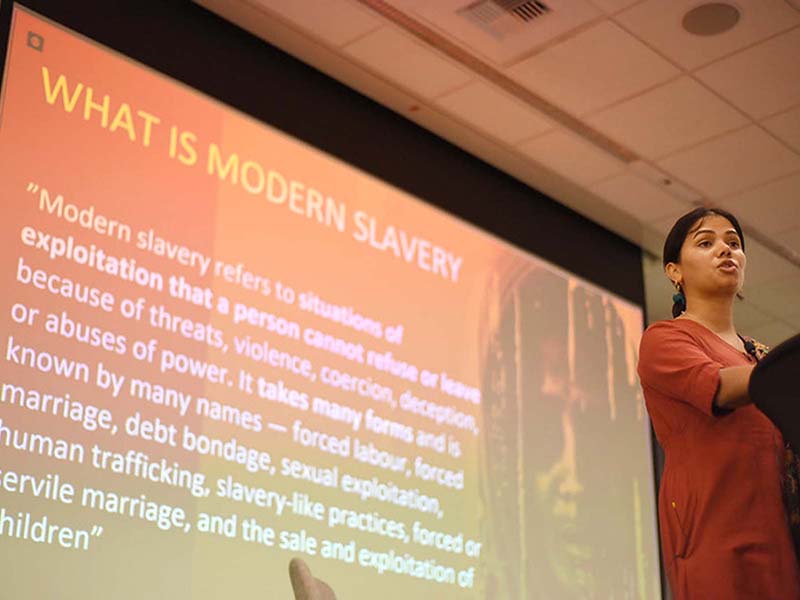
Key Points
- The focus on human rights at the Board of Directors level is often in reaction to a crisis.
- Business can use the findings of human rights due diligence to catalyze the development and implementation of long-term human rights action plans. To do this, they need buy-in from all levels of the business.
- As implementation of the UNGPs has matured, there is consensus and growing awareness that a human rights program is much more than a one-off due diligence process.
The focus on human rights at the Board of Directors and C-Suite levels often starts in response to one of two situations: a crisis or scandal that forces a company to respond, or pressure from regulators, investors, and other stakeholders to implement a due diligence program. That pressure is very much on the rise, with emerging legislation in the EU such as the Directive on Corporate Sustainability Due Diligence and the Uyghur Forced Labor Prevention Act in the US making it incumbent upon leadership to proactively manage human rights issues across their value chain on an ongoing basis—which requires moving from the due diligence phase into long-term implementation and integration.
Through our partnership approach, BSR works with companies to move beyond the due diligence phase into implementing long-term human rights action plans, governance, systems, cultural integration, and stakeholder engagement to embed those processes across the business.
From experience, successfully implementing a long-term vision for human rights requires the following four steps:
1. Set and Communicate the Ambition
First, establish the level of ambition for mitigating or remediating identified risks. This often requires understanding stakeholder expectations and peer practices, your own company’s leverage, and, most importantly, requires a clear mandate and commitment from the top. This commitment should be accompanied by clear governance and measurable KPIs at the corporate level to channel efforts and track progress. Ambition level has implications for resources—budget, staff time, and strategic planning. Buy-in from the C-Suite and ideally the Board of Directors is critical to securing the resources and mandate needed to follow through.
Putting it into practice: After conducting a human rights assessment and gap analysis for a telecommunications company, BSR presented the results and recommendations to the Executive Committee. The Executive Committee agreed that the company faced significant human rights risks across its value chain and that additional resourcing would be needed to effectively manage those risks over the long term. BSR provided a briefing to the Board to build understanding and awareness of human rights issues for the company and supported the development of two corporate-wide human rights KPIs that were integrated into the following year’s strategy.
2. Identify the Right Owners
It is crucial to understand who within the company is the right person and/or department to own the different dimensions of the long-term action plans. Sustainability and/or human rights teams cannot implement follow-up alone. Instead, the entire business needs to take ownership where relevant—whether procurement teams that have direct engagement with suppliers, or product development teams that can embed human rights thinking and concepts like “privacy by design” at the product design stage. Making the business case to manage human rights will look different for each part of a business; for some, it will be a natural extension of their current focus, and for others, it may at first appear at odds to or irrelevant to their core work or context.
Putting it into practice: After an incident at a mining company’s asset in Australia, BSR was asked to provide a human rights training to help build an understanding that human rights are global, universal, and relevant in all jurisdictions. Through informal conversations during breaks in the schedule, the team got to know the participants and identified individuals who seemed ready and interested to embed human rights in their area of work; some were members of the senior leadership team, and others were junior technicians. Working with the Communities and Social Performance Manager, BSR helped build a network of human rights “champions” who could learn from each other, provide mutual support, and be a sounding board as they each continued to work to embed human rights into their separate core functions.
3. Integrate into Business Functions
Addressing human rights risks and impacts requires small, incremental changes to everyday processes. Understanding how teams perform their day-to-day roles and making those subtle changes to incorporate human rights thinking into everyday business activity is key.
Putting it into practice: Working with a company in the travel, tourism, and hospitality sector, BSR supported the training of customer service agents to spot concerns raised by customers that could relate to conditions of forced labor or human trafficking. In addition to raising awareness of these issues and educating customer service agents on what to look for, BSR also reviewed the escalation and reporting criteria to ensure that when issues of concern are identified, they are channeled to the right teams for proper handling.
4. Monitor and Track Progress
Establishing milestones, metrics, and creating an associated governance structure that allows these milestones to be tracked over time and teams to be held accountable to them are critical for long-term success. Integrating human rights frameworks and measurement into a company’s Enterprise Risk Management (ERM) system can help ensure that senior leadership regularly has visibility on the company’s most salient human rights risks and mitigation actions. In addition to a traditional ERM taxonomy that looks at business impacts, integrating a human rights framework helps companies consistently track their potential “outward” impacts on society.
Putting it into practice: BSR worked with a consumer goods manufacturer to conduct human rights impact assessments across many countries over the course of several years. To support the long-term mitigation and remediation of the issues identified in each country, BSR helped develop action plans, related metrics, KPIs, and timetables. The client worked with BSR to develop a web-based monitoring platform whereby the corporate human rights team could monitor progress across all action plans in real time. Ownership and accountability for each action plan was critical to its success, which included both local and corporate-level roles and responsibilities.
As implementation of the UNGPs has matured, there is consensus and growing awareness that a human rights program is much more than a one-off due diligence process. In fact, a human rights program is an ongoing, ever-evolving process that includes regular due diligence, long-term implementation of action plans, and continuous maturation and adaptation of strategies to provide mitigation and remedy on behalf of rightsholders. Taking the long view, and following the steps outlined above, will help companies implement, embed, and integrate human rights into their business and seal the new accountabilities for executive leadership and boards in a meaningful and impactful fashion.
BSR’s latest sustainability insights and events straight to your inbox.
Topics
Let’s talk about how BSR can help you to transform your business and achieve your sustainability goals.








